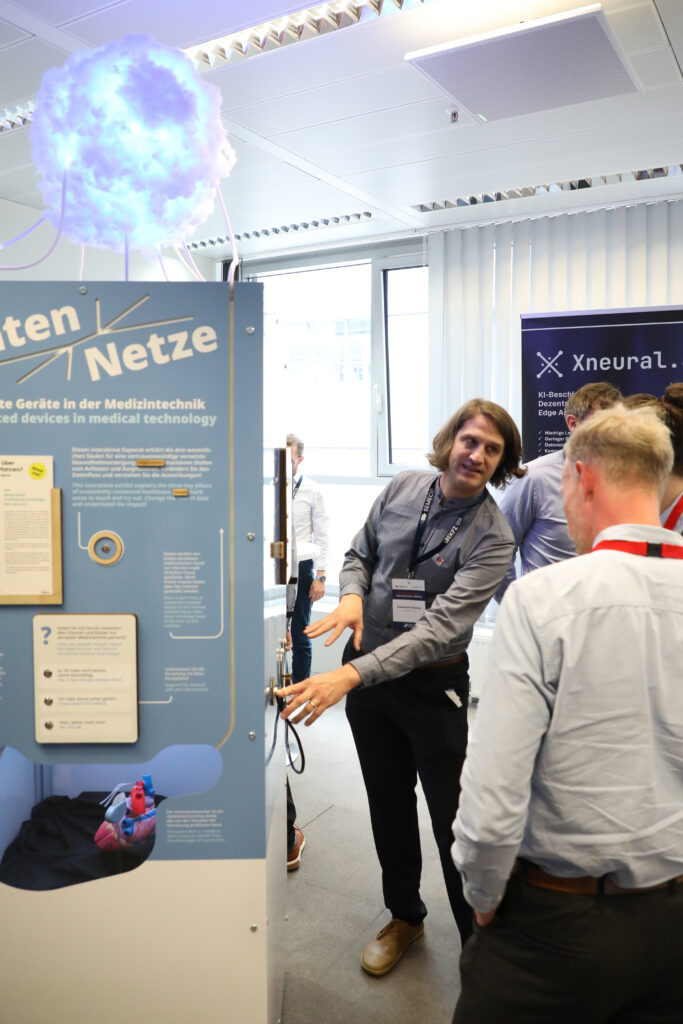
On-Site-Inspection
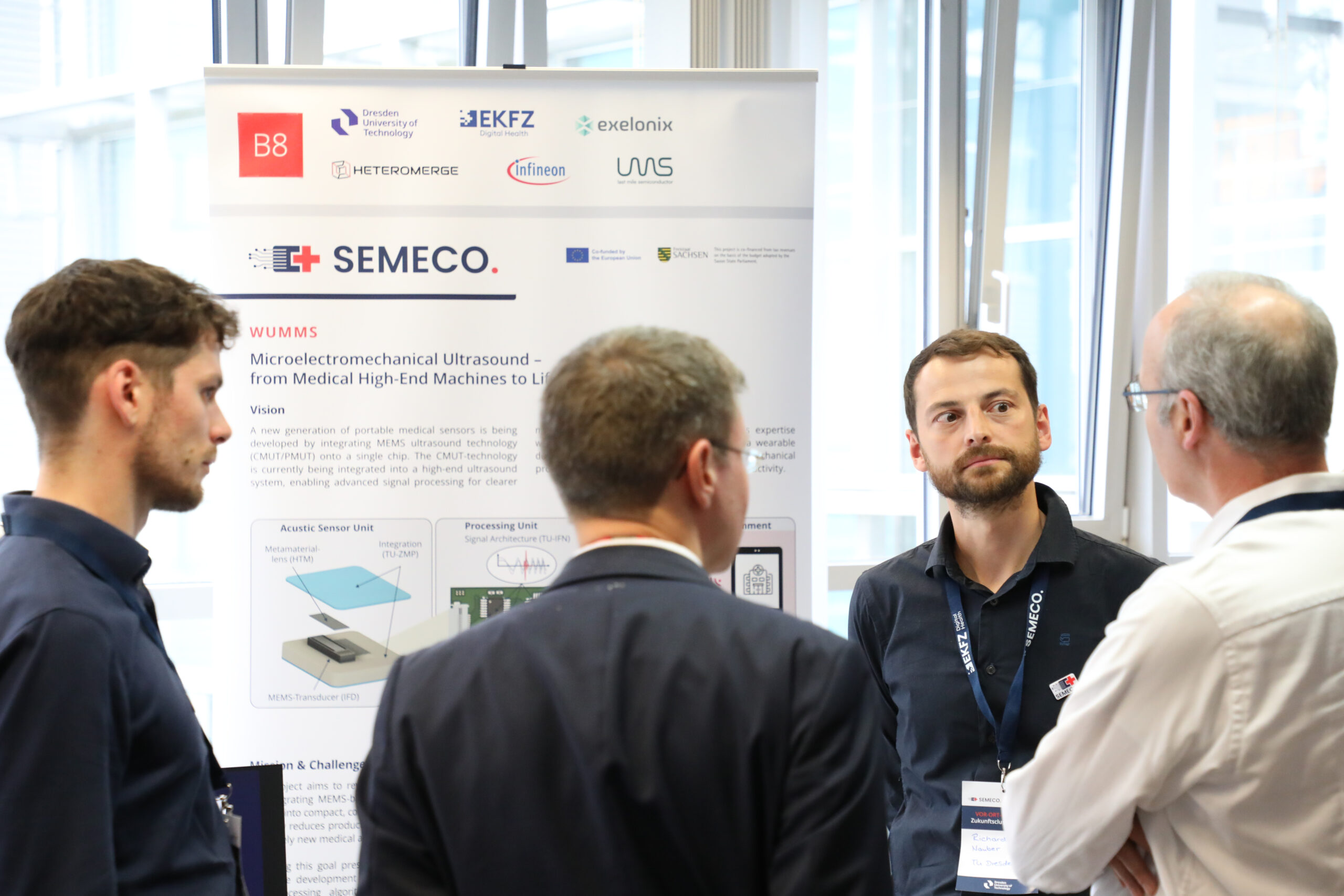
The host, itself an industry partner in several projects, impressively underscored in the welcoming remarks by Thomas Richter (Senior Vice President & Managing Director) and Uwe Gäbler (Senior Director Research & Innovation Networks Germany) how crucial close cooperation between research, industry, and medicine is for the success of the cluster and how interdisciplinary innovation can lead to concrete solutions for safe, efficient, and sustainable healthcare.
The joint goal is ambitious: to break the innovation bottleneck in the medical technology industry, accelerate innovation cycles, and rethink semiconductor technology for medicine – moving away from standardized components toward modular platform solutions that enable new generations of smart medical technology.
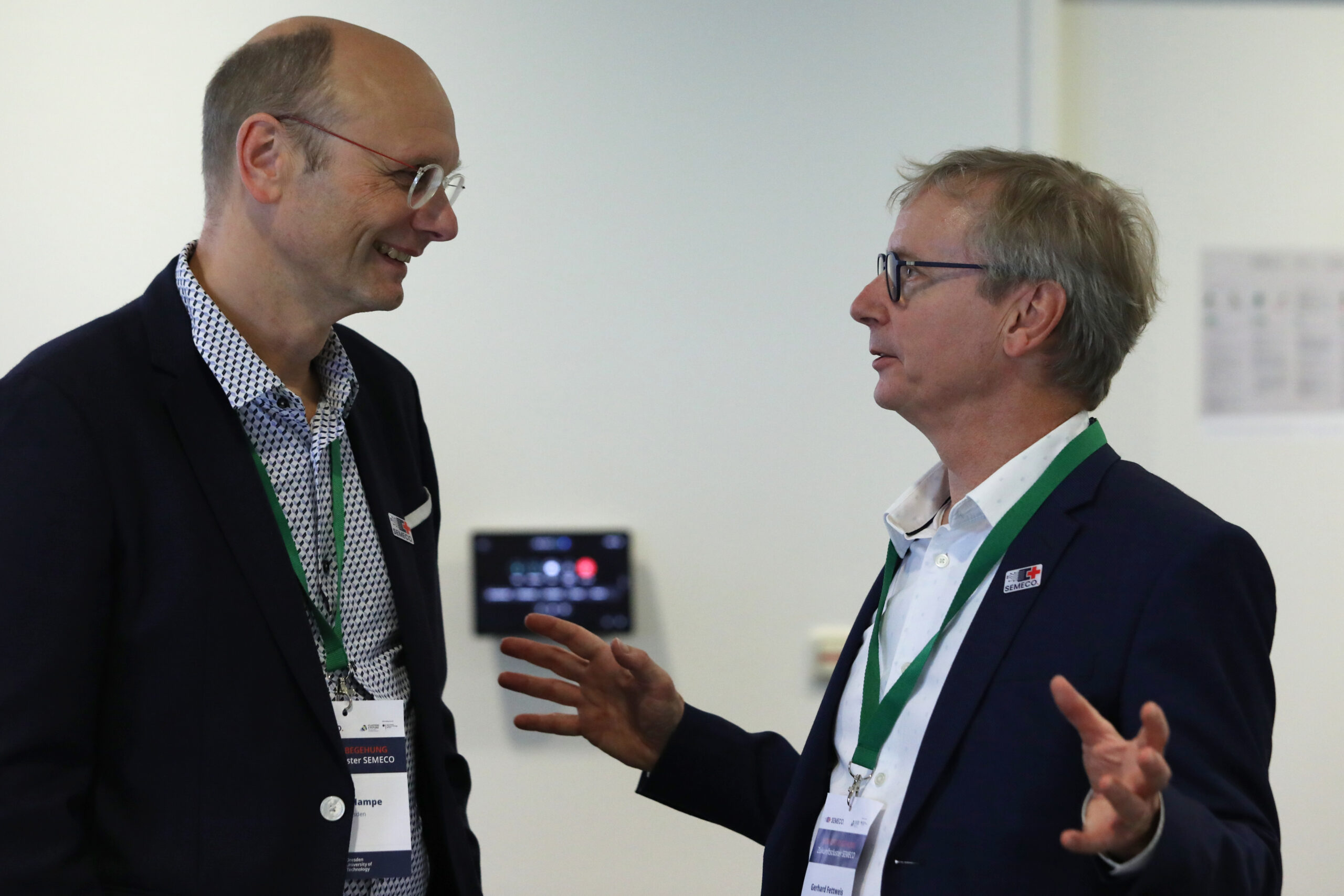
Our goal is clear: we want to establish Saxony and Dresden as a leading region for medical semiconductors and smart medical technology. The strength of our cluster lies in the diversity of its partners and the high level of participation by renowned industry partners in the individual application and cross-sectional projects.
Cluster spokespersons Prof. Jochen Hampe and Prof. Gerhard Fettweis

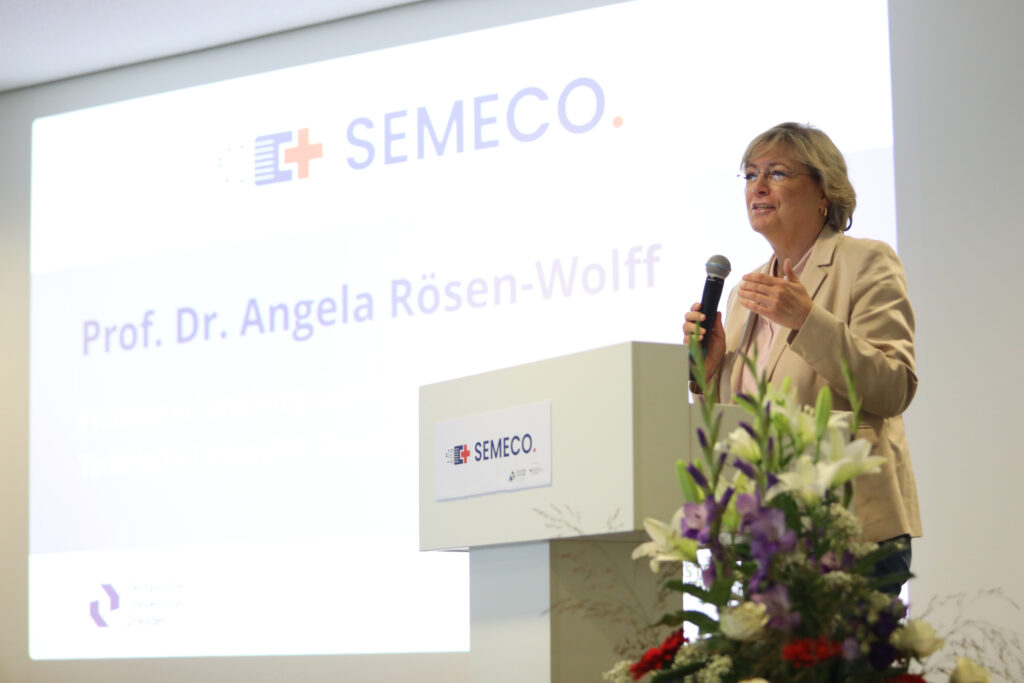
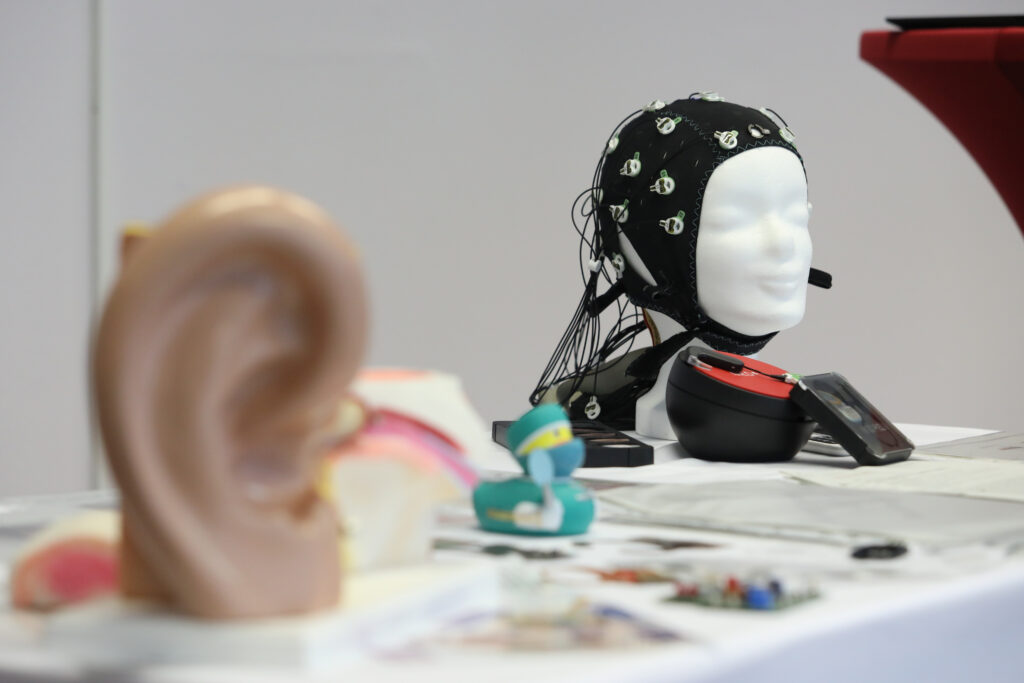
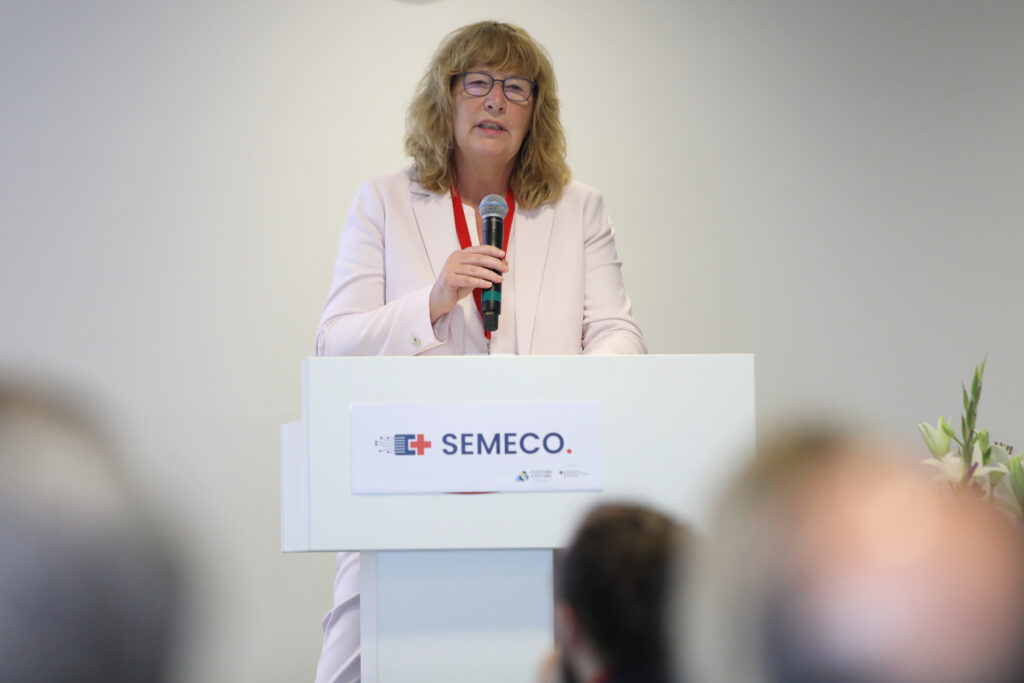
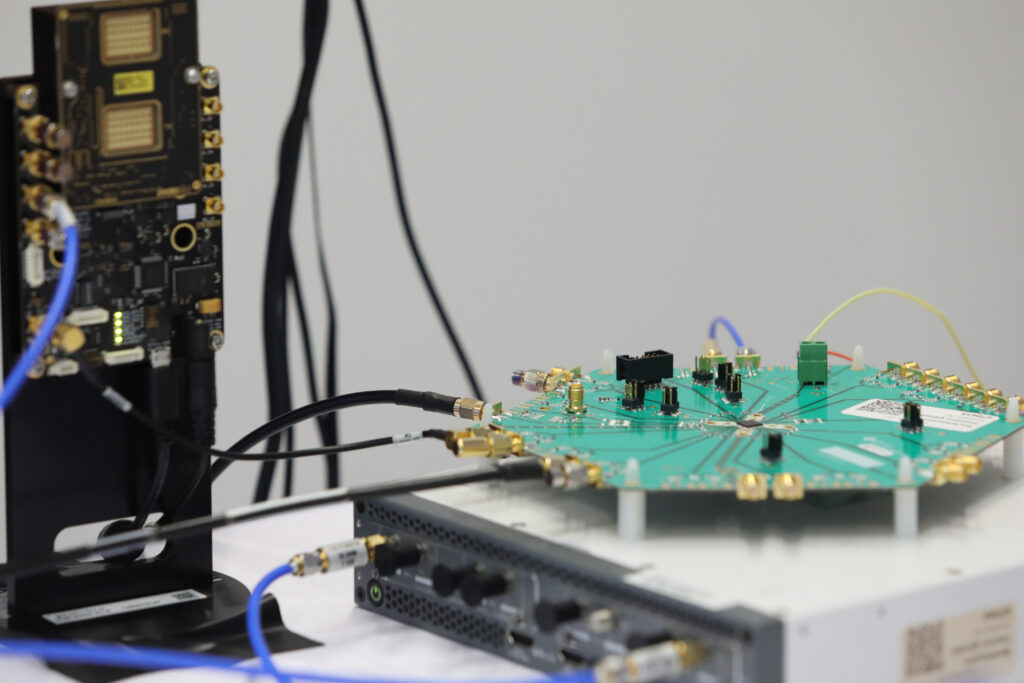
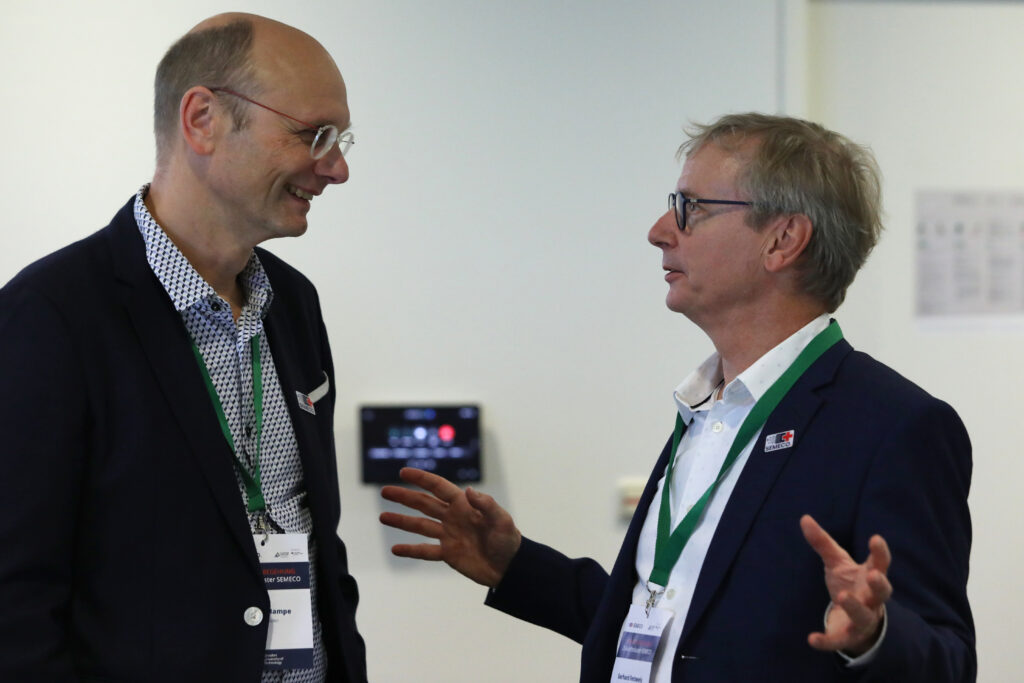
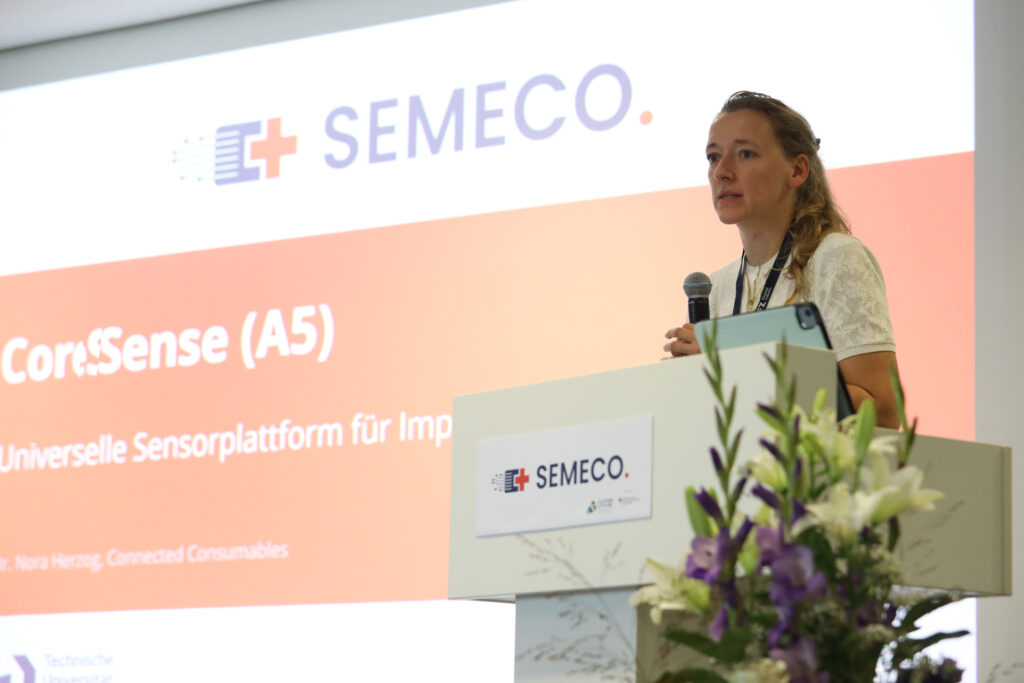
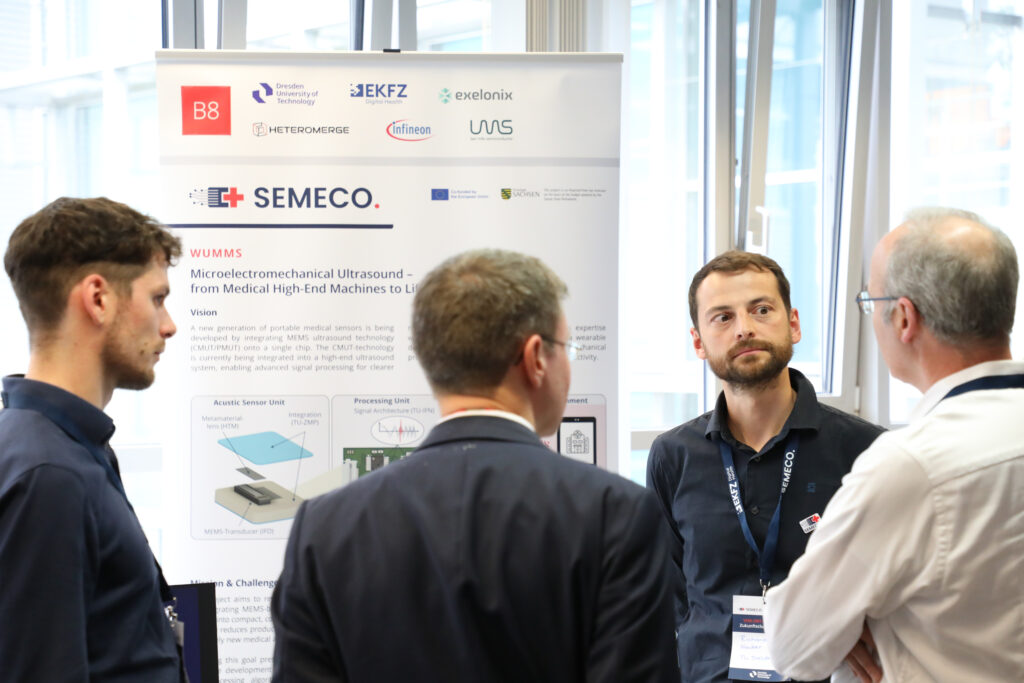
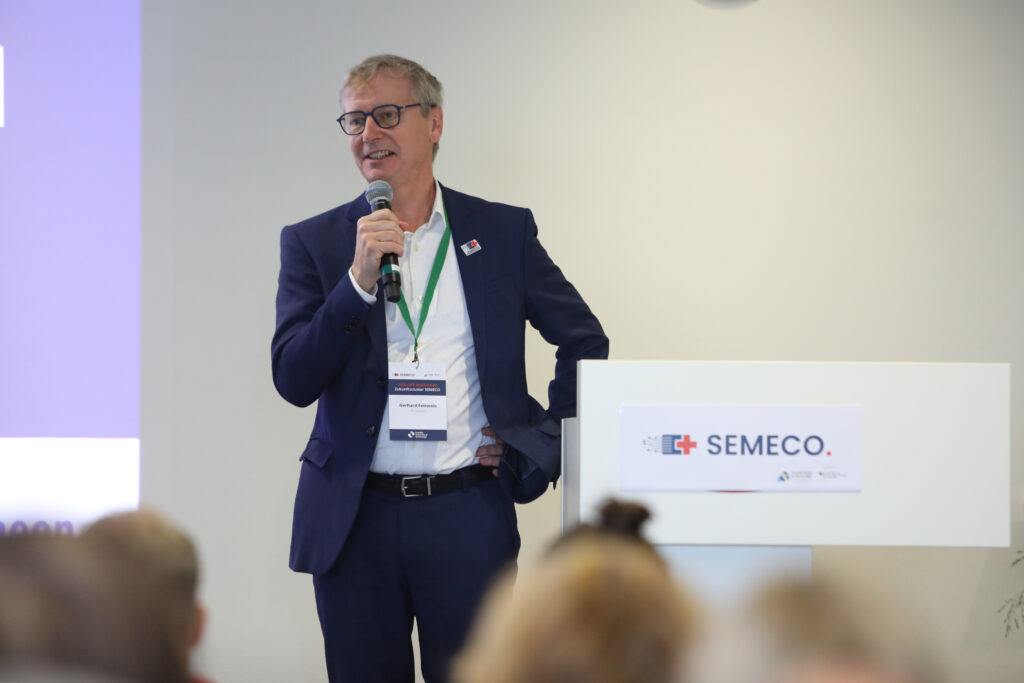
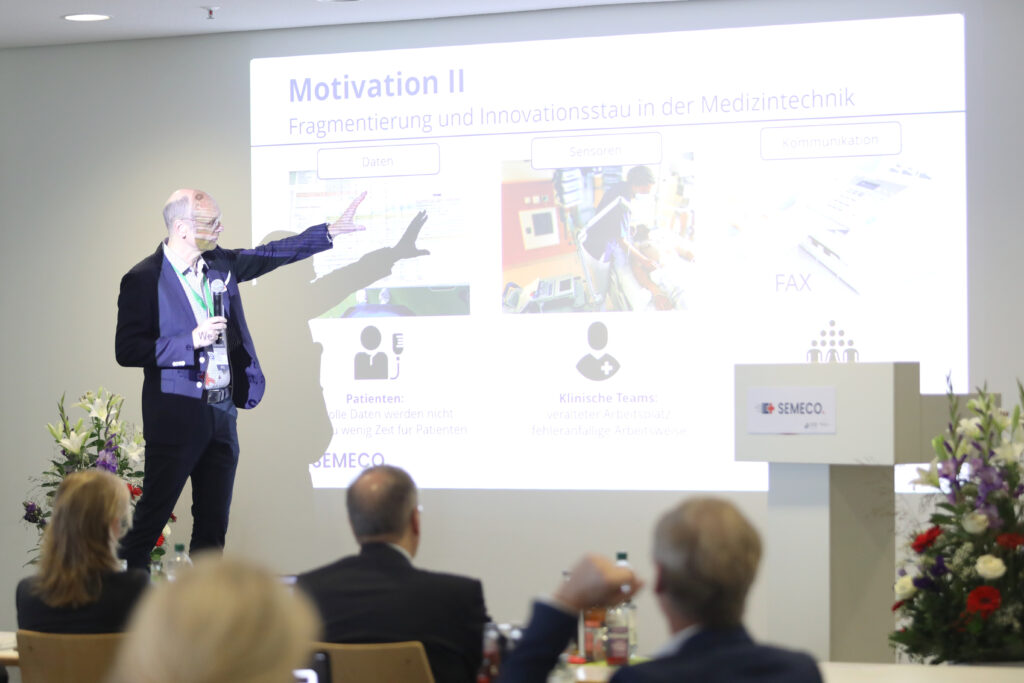
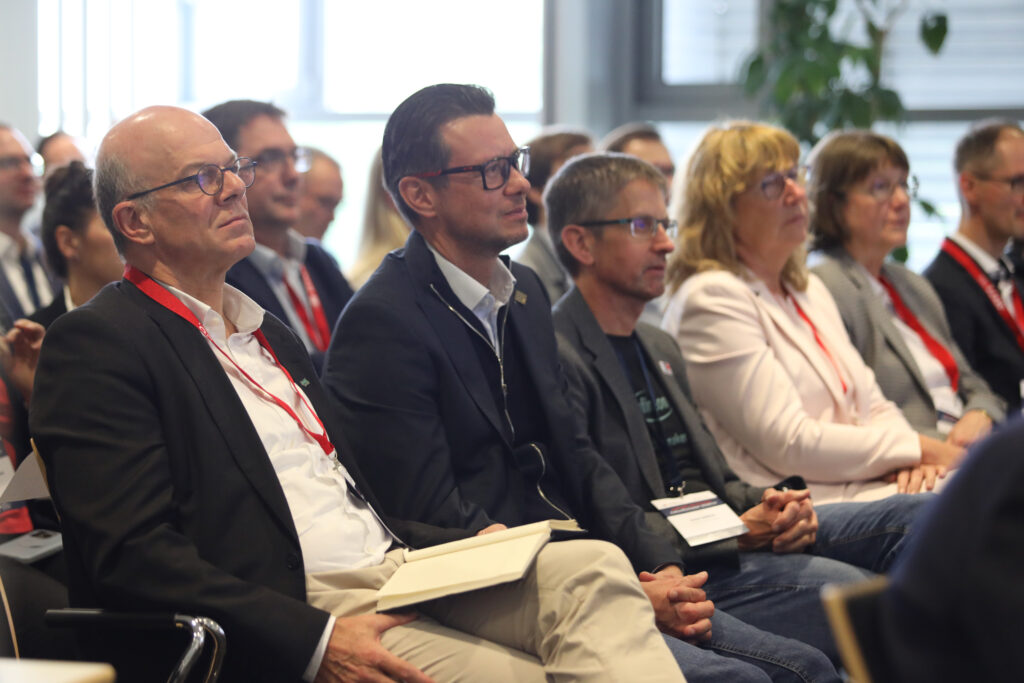
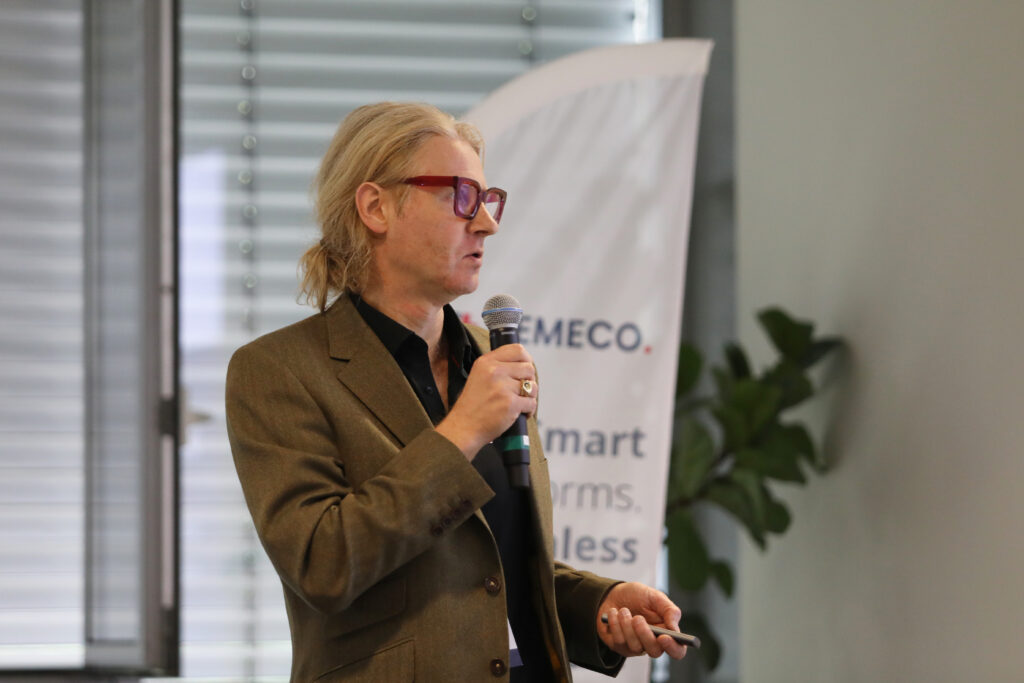
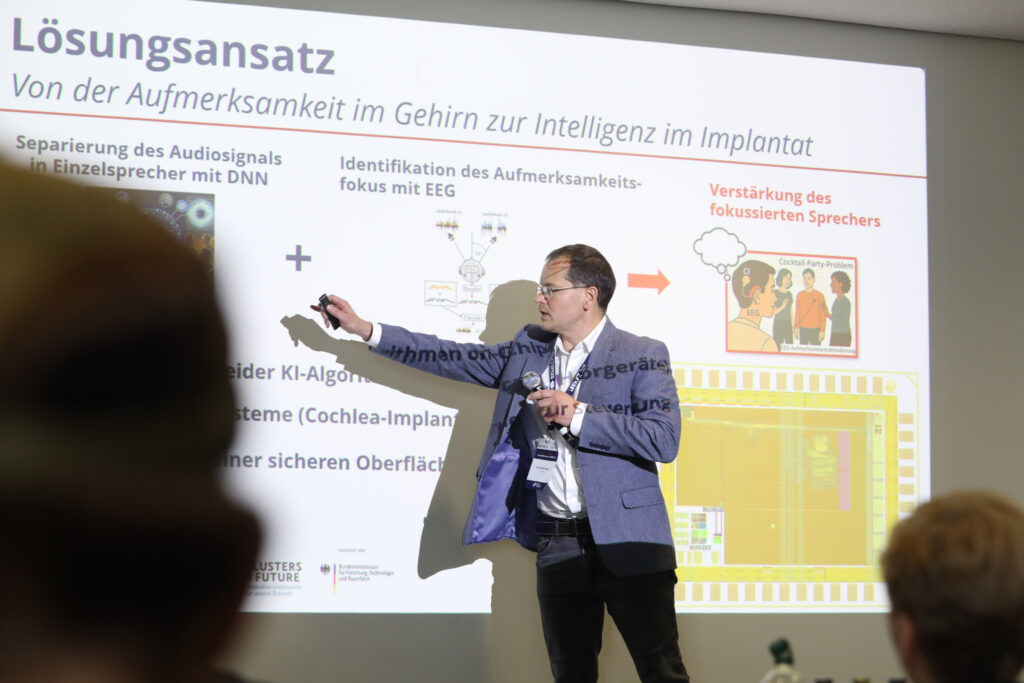
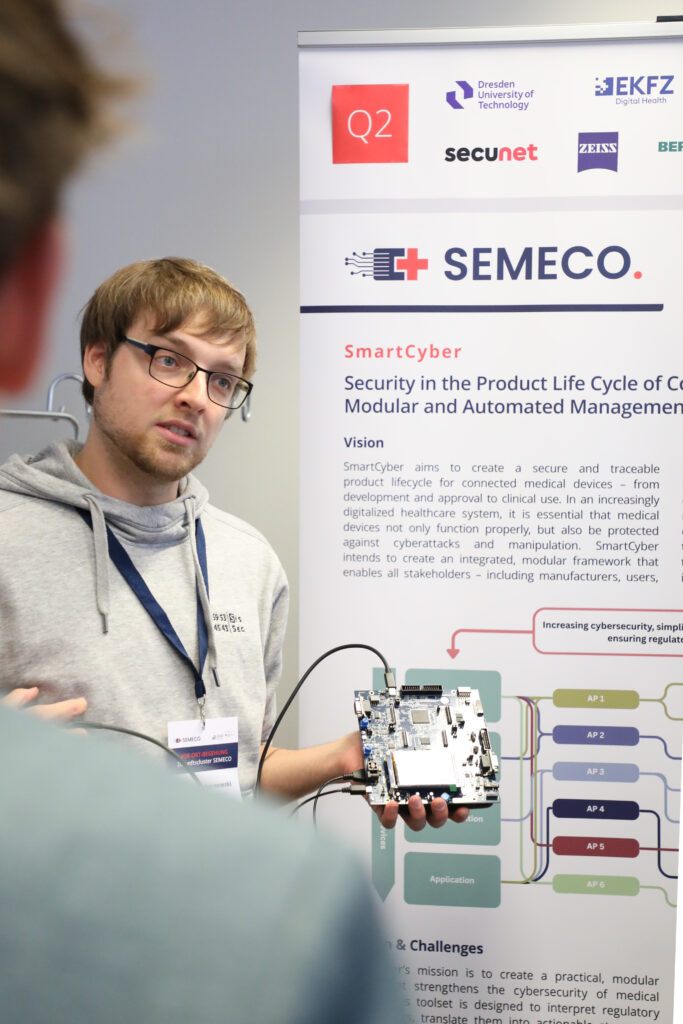
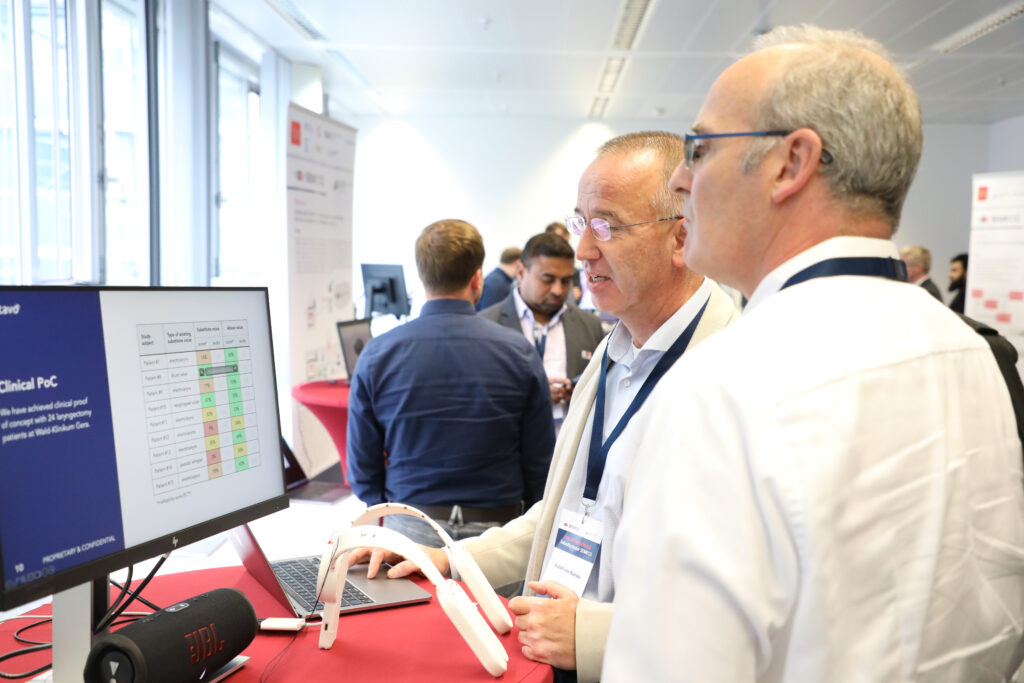
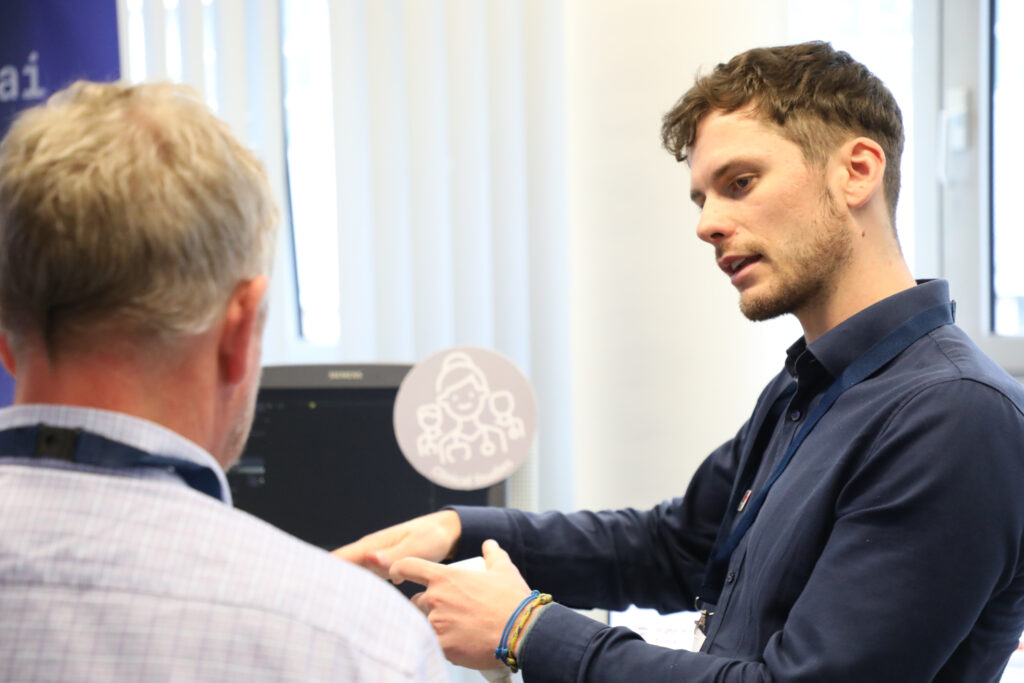

A strong ecosystem in Silicon Saxony
The welcoming remarks by Heike Hempel, representative of the Saxon Ministry for Economic Affairs, Labour, Energy, and Climate Action (SMWA), and Prof. Angela Rösen-Wolff, Vice Rector Research and Technology Transfer at TUD Dresden University of Technology, emphasized the special significance of Dresden’s research and innovation ecosystem. Hempel emphasized that this unique network of science, industry, and start-ups further strengthens Silicon Saxony as a research and industrial location. Rösen-Wolff added that the environment at TU Dresden offers ideal conditions for sustainable cooperation, where cutting-edge research and technology development go hand in hand.
From research to application – for smarter, safer, and connected medical technology
In numerous technical presentations and an impressive demo session, the project teams and partners presented the results of the first implementation phase to the expert reviewers and the jury. The demonstrators and prototypes showed how medical semiconductors, AI-based regulation, and modular system architectures interlock and build on each other in all projects. In the potential second implementation phase, the cluster partners want to further expand their activities and focus more strongly on market orientation and product implementation. The focus is on the vision of medical semiconductors, the integration of new technology trends by start-ups such as XNeural i.G., and the effective use of synergies between industry and basic research. “The goal is to establish Dresden as a European center for semiconductors in medical technology and to permanently strengthen the bridge between the electronics industry, medical technology, and clinical application. A positive evaluation by the jury and expert reviewers would be an important signal for the sustainable further development of Saxony as a MedTech region and a confirmation for politicians and industry to continue investing in Europe’s leading academic and industrial location for microelectronics, communication technology, and explainable AI. We would like to thank everyone involved and all the project teams for their commitment and outstanding work. The enthusiasm and close cooperation of our partners show that SEMECO is ready to take the next step,” emphasized cluster spokespersons Fettweis and Hampe, the leadership duo consisting of a communications engineer and a physician, who themselves embody the close cooperation between medicine and high-tech in the cluster.
Background
SEMECO (Secure Medical Microsystems and Communications) is one of the next generation innovation networks from the second round of the BMFTR initiative Clusters4Future. With its open-topic and open-technology cluster initiative, the Federal Ministry of Research, Technology, and Space is promoting interdisciplinary innovation networks that transfer the results of cutting-edge research into application more quickly. The aim is to create new innovation structures in the regions and strengthen Germany’s position in global competition. The next generation innovation networks will receive up to 45 million euros in funding over a maximum of nine years.
